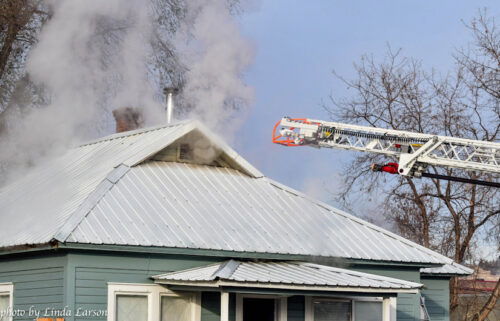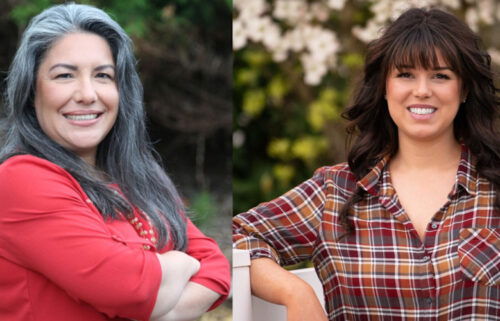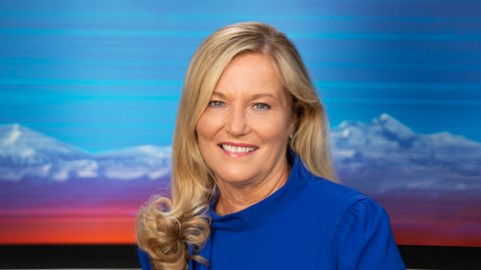Gunning for girls: New OSU study links rise in women’s gun ownership to more targeted advertising
Bola Gbadebo speaks with Redmond firearms training business, OSU professors tracking the changes
CORVALLIS, Ore. (KTVZ) – Gun manufacturers are appealing to women as “serious students” of firearms in their advertising – a shift in strategy over the last two decades that may be contributing to increased gun sales, a new study from three Oregon State University associate professors shows.
In this special report, viewable above, Bola Gbadebo talks with Liberation Firearms Training in Redmond about a rise in gun ownership among women, and with the OSU researchers who say targeted advertising is playing a role.
Here's OSU's report on the study:
From 2007 through 2022, women’s gun ownership rose from 16% to 22%, while the rate for men stayed roughly steady at 43%. And more than half of new gun owners in the United States between 2019 and 2021 were women.
“Those trends in gun ownership seem at odds with polling that indicates women much more strongly favor gun control than men. How can women who are typically more in favor of gun control than men be buying guns at these rates?” said Michelle Barnhart, an associate professor in OSU’s College of Business and one of the paper’s authors.
“One thing that has changed during this period is gun manufacturers’ marketing strategy. These changes give us insights into how the industry has become more successful in attracting women in recent years.”
The study’s findings, based on an analysis of 20 years of gun advertising, were recently published in the Journal of Macromarketing. Coauthors are Aimee Huff, associate professor in the OSU College of Business, and Brett Burkhardt, associate professor of sociology in OSU’s School of Public Policy.
Generally, representative imagery in advertising can encourage changes in behavior. Gun advertising is unique compared to other consumer products, however, because primary advertising channels are unlikely to accept gun-related advertising and many have policies prohibiting it, Huff said.
Guns & Ammo Magazine, the largest circulation magazine dedicated to guns that is not published or distributed by the National Rifle Association, is one of the places where gun advertising is common. The researchers had collected more than 20 years of the magazine as part of another project. While looking through the magazines, they were struck by how the advertisements had changed over the years.
The researchers found that in the first few years of their study period, from 2001-2007, no ads featured armed women. From 2008 to 2012, women in gun advertising were generally portrayed as sexy and the ads more likely targeted men who might purchase guns for their wives or girlfriends. Between 2013 and 2015, advertisers used a range of different approaches, with a few sexy ads and more that framed women gun owners as confident, empowered and feminine.
From 2016 to 2020, the advertising shifted again, with ads focusing on feminine competence, the women appearing more serious and the references to femininity more subtle. These more recent ads depict armed women as responsible, capable, well-trained and able to use their guns for serious purposes such as self-defense or protecting their children, the researchers found.
The “serious student” framing was the most popular between 2016 and 2020 and was used in about 45% of the ads studied. It portrayed armed American women as pursuing expertise with firearms through focused training and using guns for practical purposes.
“The analysis shows that gun manufacturers have tried a variety of approaches over time and moved away from some, and now they seem to have found this effective framing that supports women owning guns,” Barnhart said. “The person in the picture looks like someone who should be able to have a gun even under additional gun control measures, such as training requirements. It allows women to be both in favor of gun control and also see themselves as gun owners.”
The findings suggest gun manufacturers may have tapped into a new segment of consumers in the gun ownership market, Burkhardt said. That new market may diversify gun ownership in the U.S., but it also makes gun owners, as a group, less consistently predictable. In the past, people who identify as gun owners have been fairly consistent in their voting patterns and opposition of gun control reforms.
“New gun owners, and particularly women gun owners, may not conform to existing ideology and politics around gun ownership or gun control, and could reshape the identity of gun ownership in ways that aren’t expected,” Burkhardt noted.
The study builds on the researchers’ previous work exploring how gun manufacturers have turned to “gunfluencers” – social media influencers, often women, who are gun owners and users – to normalize and promote gun ownership in everyday life via social media posts.
“The use of print advertising, coupled with the rise of ‘gunfluencers,’ are working together to promote and normalize gun ownership among women,” Huff said.




